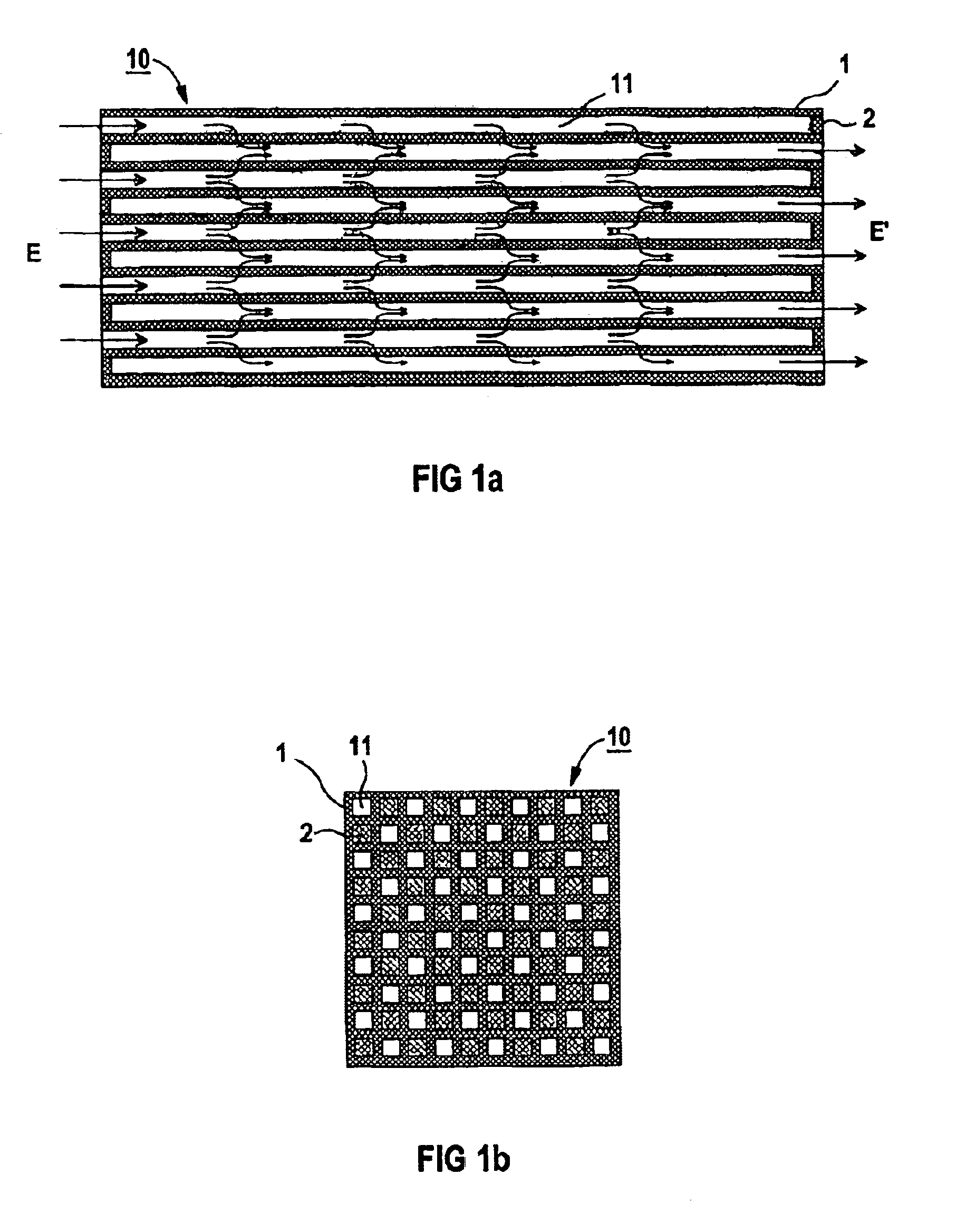Method for reducing particle emissions containing carbon of diesel motors and corresponding system
a technology of diesel motors and carbon, applied in the direction of machines/engines, mechanical equipment, separation processes, etc., can solve the problems of substantial gas heating, so high burnout duration and power density, and achieve the effect of harmless emission reduction of diesel engine particles
- Summary
- Abstract
- Description
- Claims
- Application Information
AI Technical Summary
Benefits of technology
Problems solved by technology
Method used
Image
Examples
Embodiment Construction
[0049]Reference will now be made in detail to the preferred embodiments of the present invention, examples of which are illustrated in the accompanying drawings, wherein like reference symbols refer to like elements throughout. Some of the figures are described jointly.
[0050]The method described below for reducing the levels of particulate emissions is based on the following assumptions:[0051]To ensure efficient breakdown by oxidation, the particulates have to be collected on surfaces. This is most reliably ensured by the particulate filters which are known .[0052]Oxidation which is effective even at low temperature without the addition of catalytic additives can only be achieved by oxidizing free radicals which are formed in the immediate vicinity of the surface. This can be induced with a good level of efficiency by electron collisions for example with oxygen in a non-thermal plasma:
O2+e→O+O+e (1)[0053] The oxygen free radicals react with the carbon surface C(s) and in the proces...
PUM
 Login to View More
Login to View More Abstract
Description
Claims
Application Information
 Login to View More
Login to View More - R&D
- Intellectual Property
- Life Sciences
- Materials
- Tech Scout
- Unparalleled Data Quality
- Higher Quality Content
- 60% Fewer Hallucinations
Browse by: Latest US Patents, China's latest patents, Technical Efficacy Thesaurus, Application Domain, Technology Topic, Popular Technical Reports.
© 2025 PatSnap. All rights reserved.Legal|Privacy policy|Modern Slavery Act Transparency Statement|Sitemap|About US| Contact US: help@patsnap.com



